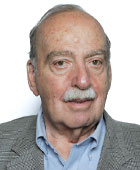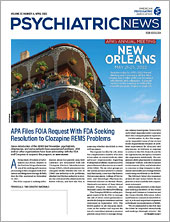Physicians in most areas of medicine view and experience their discipline as they did when they graduated from residency. We have psychiatrists who graduated when psychotherapy was the dominant psychiatric therapy and more recent graduates for whom the use of medications is commonplace.
In 1900, many psychiatrists worked in state hospitals for the insane. The most common disorder among patients was neurosyphilis. Later antibiotics removed syphilis from the patient disorders primarily seen by psychiatrists. In 1940, psychiatrists were still mainly employed in state hospitals without effective treatment for tens of thousands of patients diagnosed with schizophrenia.
After World War II, psychoanalysts who fled Europe exerted a significant influence on American psychiatry. In the 1950s and 1960s, new psychiatry departments were formed in medical schools with the most distinguished departments chaired by psychoanalysts. Their focus was on using psychoanalytic theory to understand behavior and psychiatric disorders. Graduates of their residencies focused on practicing psychotherapy.
In 1950 chlorpromazine—the first effective antipsychotic medication—was synthesized in France. Its initial use for the treatment of patients with schizophrenia in the United States occurred around 1955. Inpatient treatment of individuals with schizophrenia in private hospitals might not be given medication, and hospitalizations could last for months or years. During the same period, the introduction of antipsychotic medication in state hospitals led to the discharge of thousands of patients.
The 1980s and 1990s saw a shift in academic psychiatry departments. Tension arose between psychoanalytically influenced faculty and those focused on the evolving field and knowledge of psychopharmacology. Melvin Sabshin, M.D., a psychoanalyst and the APA medical director from 1974 to 1997, warned against both the risk of biologic reductionism in understanding the complexity of human behavior and the rigidity of psychoanalytic theory in developing treatments for our patients. During Dr. Sabshin’s leadership, APA developed DSM-III and DSM-IV.
By the 1990s, psychotherapy and psychopharmacologic therapies competed for the soul of American psychiatry. As this internal debate raged, thousands of students graduated from psychology and social work graduate programs trained to practice psychotherapy.
In the 1980s, the health insurance landscape changed with the advent of managed care companies that determined reimbursement. In the absence of any significant evidence-based studies demonstrating any one group of practitioners was superior to another discipline’s professionals, insurers paid all the same amount for comparable services. It became clear to psychiatrists that they could earn significantly more income treating patients by prescribing medications and having others provide psychotherapy.
As these changes occurred, the number of psychiatry residencies increased from 185 in 1990 to 317 in 2021. All psychiatry residencies are required for accreditation to meet the same standards and assess residents comparably. However, with thousands of faculty members and broadly diverse clinical sites, residency training experiences vary wildly.
Expanding knowledge of mental health disorders will produce new therapies. It is the quality of our diagnostic assessment that will inform treatment selection. DSM-5-TR provides a critical foundation to understanding our patients just as auscultating the heart provides essential information to a cardiologist. But it is not enough. In psychiatry, treatment must be formulated on a thorough assessment of the biologic and social determinants of patients’ behavior with an in-depth psychological evaluation.
To be a 21st century psychiatrist, each of us must be able to apply, as indicated, the use of medications and provide psychotherapy. Such care must be provided in a framework that addresses societal impacts on each of us. ■

